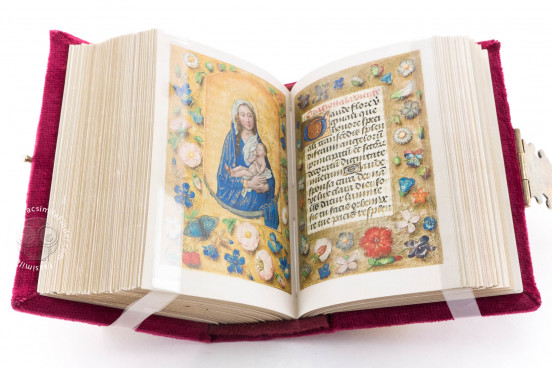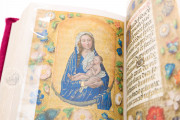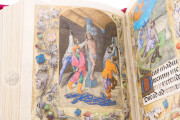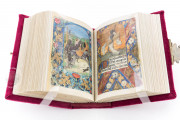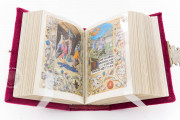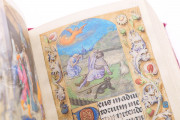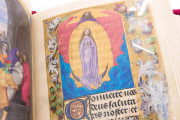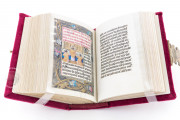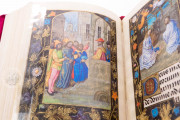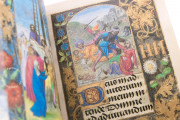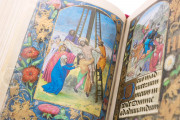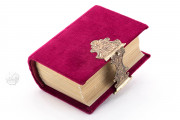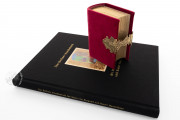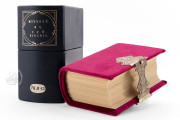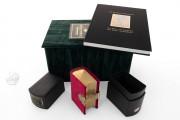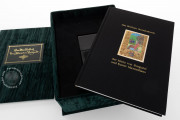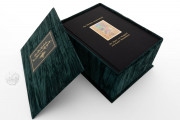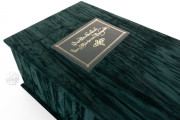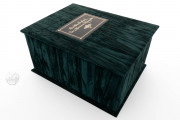The Berlin Hours of Mary of Burgundy and Emperor Maximilian is among the most famous and beautifully illuminated manuscripts of Flemish tradition. The codex, written and illuminated in the last quarter of the fifteenth century, features 27 full-page miniatures, 16 ornaments, 11 larger and 36 smaller miniatures, all of superb quality. With its shimmering gold and neat use of colors, it is a pinnacle of Flemish illumination.
Written in Latin, this book of hours contains prayers and devotional texts for private use. It was produced between 1480-1482 in the Ghent area and takes its name after its owners, Mary of Burgundy and Emperor Maximilian I of Austria.
An Unknown Illuminator
The identity of the book’s illuminator is unknown, but the name of Alexander Bening, Simon Bening's father, has often been suggested. For a long time, however, the miniatures in the manuscript were thought to be the work of the Master of Mary of Burgundy, the famous artist of Flemish book painting. Other scholars suggest that the artist of this manuscript might have been among the followers of the Master of Mary of Burgundy.
Flemish Book Painting and its Techniques
The borders feature an immense fantasy ornament and nature observation, so that an incomparable splendor arises from acanthus and flowers, fruits and butterflies. The borders surround immensely detailed picture frames with their minute representations from the Bible and sacred history. The technique of trompe-l'oeil permeates the whole codex.
The miniatures convey a dramatic atmosphere when they represent scenes of passion and martyrdom, while a more lyrical tone characterizes miniatures like the one portraying the Virgin and Child (fol. 284v). Most remarkable is the miniature known as the Three Living and the Three Dead (fol. 220v), which may have been added after Mary’s death as a last tribute from her husband. If it was depicted while Mary was still alive, instead, it may want to demonstrate the high virtue of intrepidity even in the face of death, thus paying homage to the duchess.
Templates and Patterns of Flemish Book Painting
What seems to be certain is that the artist based his depictions on patterns deriving from diverse artists. The Virgin with the musical Angels was copied, from the ground to the particularities of colors, from a miniature by Simon Marmion (Book of Hours, fol. 34v). This and other examples show evidence of the availability, at the time of this codex, of a full body of new patterns generated in the early 1470s and inspiring later productions.
Lettre Bourguignone
The script is an exquisite example of Gothic bastarda, a minuscule bookhand. Originated between France and the Netherlands, this script was widely used in the court of the Duchy of Burgundy, so much that it is also known as lettre Bourguignone. Typical of this script are the uncial d and the double looped s.
Signs of Ownership
The manuscript was possibly commissioned and made on occasion of the wedding of Mary of Burgundy, daughter of Charles the Bold, and Emperor Maximilian I of Austria in 1477. Signs of their ownership run throughout the book and include an escutcheon with the arms of Maximilian (fol. 340v), an escutcheon with the arms of Mary (fol. 341v), the motto of Maximilian "Halt Mas" (fol. 327v), and the initials MM in many borders (fol. 158r onward).
We have 1 facsimile edition of the manuscript "Hours of Mary of Burgundy and Emperor Maximilian": Das Berliner Stundenbuch der Maria von Burgund und Kaiser Maximilians facsimile edition, published by Coron Verlag, 1999
Request Info / Price
